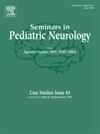低收入和中等收入国家脑瘫的管理
IF 2.1
4区 医学
Q2 CLINICAL NEUROLOGY
引用次数: 0
摘要
脑瘫是全球儿童残疾最常见的原因,在低收入和中等收入国家发病率较高。由可预防的围产期损伤引起的缺氧缺血性脑病(HIE)仍然是LMIC中CP的主要原因。痉挛性四肢瘫痪CP是LMIC中最常见的亚型,占70- 80%的病例。缺乏认识,加上耻辱感,延误了干预措施的启动,导致结果较差,服务质量下降。对CP患儿的综合管理需要一个跨学科的专家团队。低收入和中等收入国家往往缺乏这种专门知识。即使有,其分布也主要向城市地区倾斜。虽然合并症的负担较高,但相关疾病的筛查和诊断不足,导致管理不善。手术干预,如鞘内巴氯芬、选择性背根切断术治疗痉挛和胃造口管插入治疗严重胃食管反流病的儿童,往往受到成本和训练有素的人员数量不足的限制。以证据为基础的地方指南对于管理CP儿童、指导政府投资以改善整个家庭的生活质量至关重要。低收入和中等收入国家需要在卫生保健系统改革、政策制定者、社区参与和意识方面共同努力,加强早期诊断和适当转诊,并通过当地产生的循证干预措施进行管理,以改善对CP儿童及其家庭的护理。本文章由计算机程序翻译,如有差异,请以英文原文为准。
Management of cerebral palsy in low- and middle-income countries
Cerebral Palsy (CP) is the most common cause of childhood disability globally with a higher prevalence in low and middle-income countries (LMIC). Hypoxic-ischemic encephalopathy (HIE) caused by preventable perinatal insults is still the leading cause of CP in LMIC. Spastic quadriplegic CP is the most common subtype in LMIC accounting for 70-80 % of cases. Lack of awareness compounded by stigma delays initiation of intervention leading to a poorer outcome and reduced quality of. The comprehensive management of children with CP requires an interdisciplinary team of experts. Such expertise is often lacking in LMIC. When available, its distribution is largely skewed towards urban areas. Although there is a higher burden of comorbidities, screening and diagnosis of the related conditions are inadequate, leading to poor management. Surgical interventions such as intrathecal baclofen, selective dorsal rhizotomy for spasticity and gastrostomy tube insertion for children with severe gastroesophageal reflux disease is often limited by costs and shortage number of trained personnel. Evidence-based local guidelines are essential for managing children with CP, guiding government investments to improve the quality of life for entire families. Concerted efforts in healthcare system reforms, policymakers, community engagement and awareness to enhance early diagnosis and appropriate referral, management through locally generated evidence-based interventions are required in LMIC to improve care among of children with CP and their families.
求助全文
通过发布文献求助,成功后即可免费获取论文全文。
去求助
来源期刊

Seminars in Pediatric Neurology
CLINICAL NEUROLOGY-PEDIATRICS
CiteScore
4.80
自引率
0.00%
发文量
38
审稿时长
84 days
期刊介绍:
Seminars in Pediatric Neurology is a topical journal that focuses on subjects of current importance in the field of pediatric neurology. The journal is devoted to making the status of such topics and the results of new investigations readily available to the practicing physician. Seminars in Pediatric Neurology is of special interest to pediatric neurologists, pediatric neuropathologists, behavioral pediatricians, and neurologists who treat all ages.
 求助内容:
求助内容: 应助结果提醒方式:
应助结果提醒方式:


